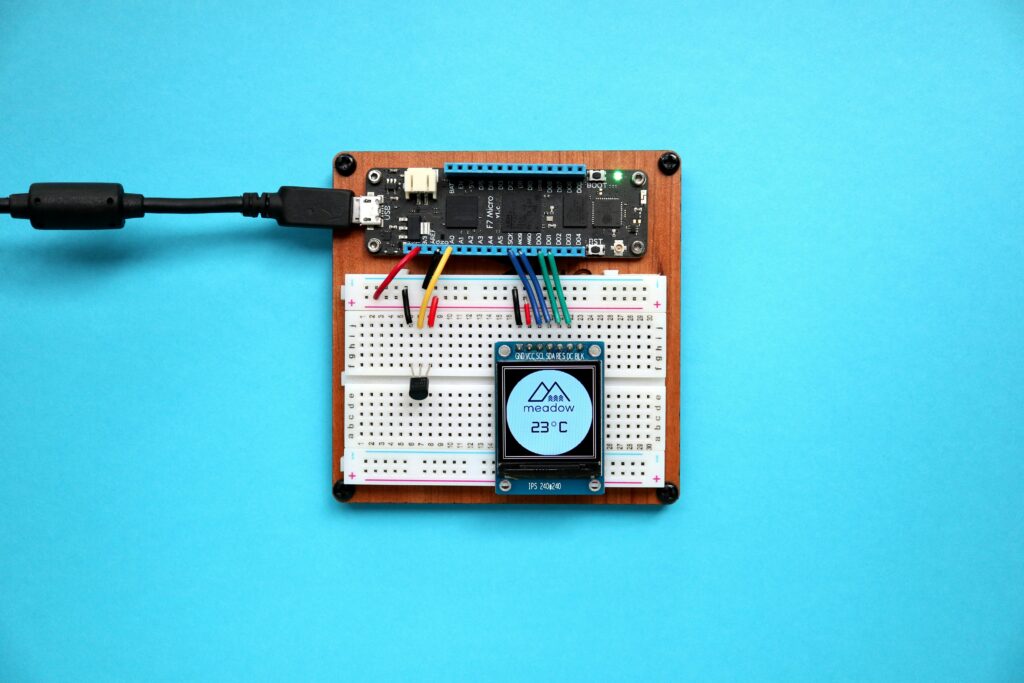Wi Fi Woes: When Smart Devices Go Silent
Intermittent disconnections are one of the most frustrating smart home issues. In 2026, with more devices than ever relying on constant connectivity, even a momentary Wi Fi glitch can throw off entire routines, automations, or voice assistant commands.
Why Devices Randomly Disconnect
Smart gadgets disconnect for a variety of reasons some of them temporary, others more systemic:
Overloaded networks: Too many devices can strain the router’s bandwidth or the number of simultaneous connections it can handle.
Old hardware: Routers over 3 4 years old may struggle with newer smart home protocols or lack crucial firmware updates.
2.4GHz vs. 5GHz confusion: Some smart devices only support one frequency band, and may disconnect if improperly assigned.
Interference: Microwaves, baby monitors, and dense walls can disrupt connections, especially on the 2.4GHz range.
Quick Fixes to Try First
Before overhauling your entire setup, start with these proven fixes:
Restart the router: An age old trick, but one that clears cache and refreshes all active connections.
Check for firmware updates: For both the router and your smart devices. Many brands push stability improvements this way.
Isolate problematic devices: Disconnect them and reconnect after a reboot cycle to see if others are causing interference.
Use or expand a mesh network: For larger homes or dense environments, mesh systems improve signal reach and balance device loads.
When It’s Time to Upgrade Your Router
Sometimes, no amount of tweaking will solve the problem your router may simply not be up to the task. Here’s how to know when to upgrade:
Frequent disconnects with multiple devices, especially if rebooting doesn’t help.
Lack of WPA3 or support for Wi Fi 6 or Wi Fi 6E, which significantly improve performance in busy homes.
Limited settings or app controls, making it harder to debug or prioritize smart home traffic.
Choosing Your Next Router
When shopping for a new router in 2026, prioritize the following features:
Tri band coverage (2.4GHz, 5GHz, and 6GHz)
Support for mesh networking to expand coverage over time
Automated firmware updates for improved security
Parental controls and traffic monitoring for better management
A reliable, modern router is the foundation of any smart home. Upgrading it can solve recurring connection issues and unlock better performance from your entire gadget ecosystem.
App & Sync Failures
In a smart home, apps are the glue. If things aren’t syncing, chances are the problem isn’t the device it’s the software stack holding it all together. Start with the basics: outdated apps don’t play nice with newer OS versions, and vice versa. If your thermostat is acting weird or a light won’t follow its routine, check that both the app and your phone’s OS are fully updated. It’s not glamorous, but it’s usually the fix.
Another common pain point: third party automation tools like IFTTT or custom HomeBridge setups. These can create conflicts when two rules tell a device to do opposite things. Keep automations clean and make sure each platform knows its role too many chefs, and your smart home turns dumb fast.
To re sync without erasing every setting, go for a soft reset inside the app (not a full factory reset). Power cycling the device while logged into the app often kicks stale connections back to life without erasing scenes or schedules. If you’ve bounced between platforms (say, adding the same plug to both Google and Alexa), it may help to de link one and consolidate under a single system.
Finally, if your setup’s gotten out of hand, it’s time for a central command app. Look for platforms like Home Assistant, SmartThings, or Hubitat apps that pull together your scattered gear under one screen. Keep it simple. Fewer apps, fewer errors. The goal isn’t to micromanage. It’s to have one place to see what’s working… and what isn’t.
Voice Assistant Confusion
When your smart assistant hears “turn off the fan” and instead plays jazz, it’s not magic it’s miscommunication. These systems are good, but not perfect. Accents, background noise, and similar sounding commands can all throw them off. Start simple: check how the command is phrased in the app’s history. If it misheard you, retrain it. Most platforms let you correct misinterpretations and improve future recognition.
Re training doesn’t mean resetting everything. In your smart assistant’s settings, look for “voice recognition” or “personal results”. Teaching the assistant to better recognize your voice or distinguishing between multiple users can clear up a lot of confusion. If it’s still spotty, try renaming devices to something more distinct. “Desk lamp” beats “light three.”
Now, about privacy. You don’t need to give up control just to get better results. Dive into permissions and activity logs. Mute the mic when you don’t need it listening. Disable features you’re not using. Most assistants let you delete voice recordings automatically after a set time do that. You can stay functional and private without going full tinfoil hat.
Smart assistants get smarter when you do a little maintenance. Talk to them like smart tools, not mysterious roommates.
Automation Gone Wrong

Smart home routines are supposed to make things simpler lights dim at sunset, thermostats adjust when you leave, coffee starts brewing at 7:00 a.m. sharp. But when scenes trigger at the wrong time or not at all, the magic wears off fast.
Step one: verify the routine settings where they live. Whether you’re working with Apple’s HomeKit, Amazon Alexa, or Google Home, each platform has quirks. Crosscheck conditions, like time zones, device availability, and triggers (motion vs. time based). Often, one outdated setting trips everything up. A recent firmware update or temporarily offline device can also interrupt a chain reaction.
If your scenes are staggered across ecosystems a smart bulb on Alexa, a thermostat on HomeKit you’ll want to check inter platform communication. Some gadgets don’t play well with others, and accessory bridges (like Homebridge or IFTTT) may create latency. Build routines with fail safes or redundancy: if your garage light doesn’t turn on within five seconds of arrival, does the motion sensor kick in as a backup?
Also, consider physical and technical limits. Bluetooth based gear won’t reach far through brick walls; older Wi Fi plugs might have a delay of several seconds. Expect latency. The trick is to understand the timing tolerances of your routine and build accordingly.
Debug methodically: isolate the failing step, run it manually, review device history logs. Don’t underestimate the power of simply re saving the automation sometimes a minor update forces the system to recompile the whole task tree.
Getting your smart home to behave isn’t about flawless tech. It’s about knowing how to read the signals, tweak the timing, and patch the holes.
Power & Charging Issues
Smart gadgets can act up when they’re not getting the power they need. Whether you’re dealing with unexplained battery drain or an outlet that doesn’t seem to keep up, power related issues often hide in plain sight. Here’s how to troubleshoot them effectively.
Common Power Problems to Watch For
Before pulling the plug on your smart gadget, consider these frequent causes of power issues:
Phantom Drain: Some devices slowly draw power even when idle. This can lead to inconsistent performance or shortened battery life.
Insufficient Power Supplies: Not all chargers or outlets are created equal. Using an underpowered adapter can cause devices to behave unpredictably or fail to charge fully.
Battery Degradation: Over time, rechargeable batteries lose capacity. If you’re charging more often than usual, it may be time to replace the battery.
Backup Options for Outages
Power outages can take your entire smart setup offline. Planning ahead ensures your key systems like cameras, locks, and routers remain functional when the grid fails.
Battery Backup (UPS): A compact Uninterruptible Power Supply can keep routers and hubs running during short outages.
Solar Charging: Useful for outdoor cameras or smart sensors in areas prone to outages.
Power Banks: High capacity power banks can provide temporary relief for smaller devices when wall power isn’t available.
Cable Management That Actually Works
Tangled or misplaced power cords not only look messy they can impact device performance. Taking the time to organize your charging setup improves airflow, reduces wear on cables, and helps identify faulty links faster.
Check out our guide to decluttering and optimizing your smart home power zone:
Smart way to manage cable clutter and charging chaos
By managing power more intelligently, you protect your investment, avoid frustrating glitches, and keep your home running smoothly even when the lights (briefly) go out.
When to Reset, Replace, or Call Support
First up, what a reset does: it wipes the slate clean on a device clears stored network info, user settings, and cached bugs. Great when a smart plug won’t respond or your lights forget their schedules. Use it as a last resort after you’ve tried easier fixes like power cycling or re adding the device via its app.
But resets aren’t magic. If your gear keeps breaking in the same way even after resetting it’s probably not the software. Hardware red flags include overheating, physical damage, or total failure to power on (even when plugged in correctly). Batteries that don’t hold a charge or buttons that stop responding are also strong clues it’s time for a replacement.
If it’s not clear which way to go, tap into manufacturer support before you toss hardware. Start with registering your product if you haven’t already. Document the issue: photos, error logs, what you’ve tested. This shortens troubleshooting and boosts your warranty claim chances. If chat support stalls, escalate. Many brands will swap faulty units fast if you make a clear, polite case.
Smart gear isn’t cheap don’t leave value on the table by skipping these steps.
Staying Ahead of Glitches
Smart homes can get dumb fast if you don’t keep tabs on what’s running, when it was last updated, and what connects to what. Start simple: create a device log. Track model numbers, setup dates, network names, admin passwords, and firmware versions. It doesn’t have to be pretty just useful. Google Sheets works. So does a notebook in a drawer. The point is to get it out of your head.
Next, schedule regular firmware checks. Quarterly works for most homes. Some devices auto update, others don’t. Go through your smart speakers, cameras, thermostats whatever talks to the internet and make sure they’re not running ancient code. Outdated firmware is slow, buggy, and often a security hole.
Finally, lean on solid apps to monitor your home’s digital pulse. Fing and Home Assistant are great for network overviews. Bitdefender’s IoT Security is worth a look if you want threat detection. These tools don’t solve every problem, but they make it easier to spot what’s off before something breaks. Stay proactive and your smart home will actually stay smart.
Parting Advice for 2026 Smart Homeowners
Less gear, fewer headaches. That’s the golden rule. It’s tempting to grab the latest smart light, doorbell, or fridge cam every time something flashy launches, but more tech means more potential failure points. The seasoned smart homeowner knows: equip like a minimalist.
Start by building on stable ecosystems ones with strong developer support, routine updates, and wide compatibility. Whether it’s Apple HomeKit, Google Home, or Alexa, pick your lane and stick to it. Mixing too many platforms just invites sync issues and lost hours troubleshooting.
Before buying the shiny “new thing,” ask yourself two questions: does it play well with the gear I already have? And is it future proof for at least the next two updates? If the answer’s no, skip it. Novelty fades fast; compatibility keeps your setup humming.
Smart doesn’t mean complex. It means intentional. Keep it lean, make it reliable.
